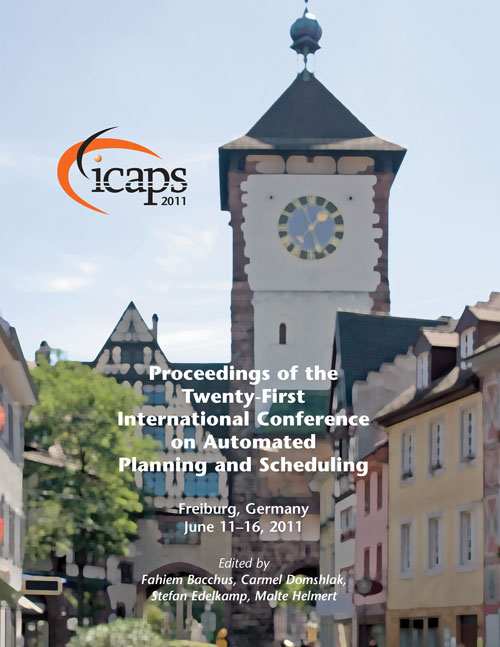Planning Problems for Social Robots
DOI:
https://doi.org/10.1609/icaps.v21i1.13481Abstract
As robots enter environments that they share with people, human-aware planning and interaction become key tasks to be addressed. For doing so, robots need to reason about the places and times when and where humans are engaged into which activity and plan their actions accordingly. In this paper, we first address this issue by learning a nonhomogenous spatial Poisson process whose rate function encodes the occurrence probability of human activities in space and time. We then present two planning problems for human robot interaction in social environments. The first one is the maximum encounter probability planning problem, where a robot aims to find the path along which the probability of encountering a person is maximized. We are interested in two versions of this problem, with deadlines or with a certainty quota. The second one is the minimum interference coverage problem, where a robot performs a coverage task in a socially compatible way by reducing the hindrance or annoyance caused to people. An example is a noisy vacuum robot that has to cover the whole apartment having learned that at lunch time the kitchen is a bad place to clean. Formally, the problems are time dependent variants of known planning problems: MDPs and price collecting TSP for the first problem and the asymmetric TSP for the second. The challenge is that the cost functions of the arcs and nodes vary with time, and that execution time is more important that optimality, given the real-time constraints in robotic systems. We present experimental results using variants of known planners and formulate the problems as benchmarks to the community.

